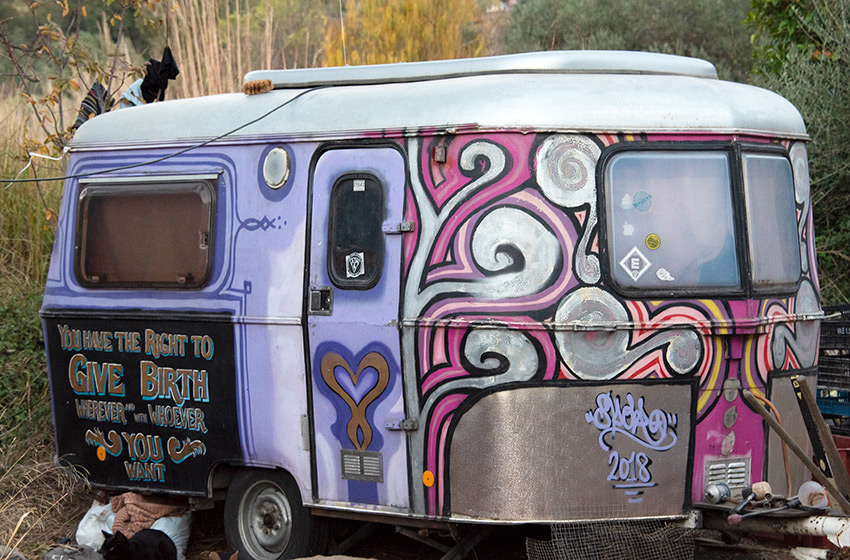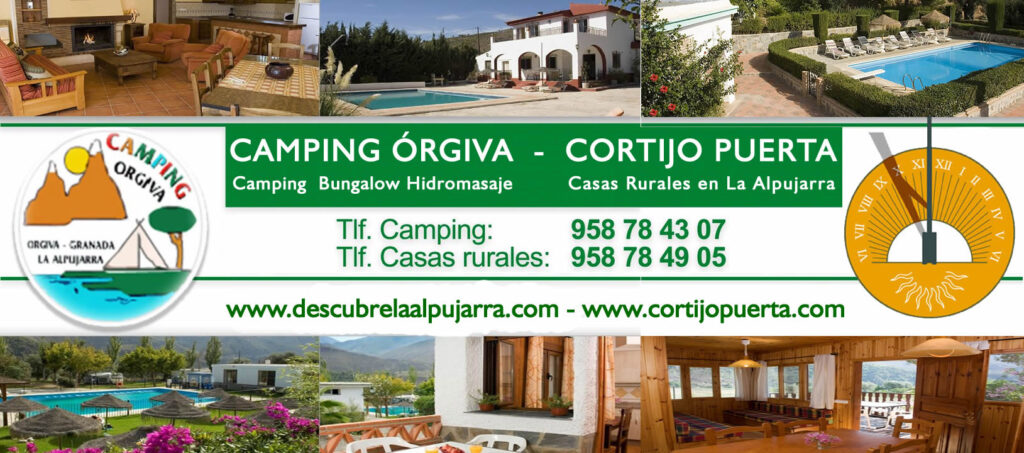A COMMON question asked: is Órgiva is being gentrified. This comment about the market town, and surrounding Alpujarra, tends to come from long-term residents, who have seen many changes over the years (especially since the 90s), and those wanting to join the property market, only to find they can’t afford anything they imagined might be in their price range.
But what does “is Órgiva being gentrified” really mean? Does such a posh-sounding word even apply to a town that has its fair share of social problems – including occasional break-ins to vehicles and properties, “bin surfers” on the main street, and people with visible drug and alcohol addiction issues.
The dictionary definition of “gentrification” (to paraphrase slightly) is:
“The process whereby the character of a poor urban area is changed by wealthier people moving in, improving housing, and attracting new businesses, frequently displacing current inhabitants in the process” or “the process of making someone or something more refined, polite, or respectable”.
So, let’s look at whether this has really happened in Órgiva. Who brought the “hordes” of people ?

An influx of Brits in the 1990s – are authors to blame?
Many Brits moved to Órgiva in the 1990s and early 2000s, attracted by cheap property prices (in that epoch), sunshine, lifestyle factors, the mountain views we all know and love, and the proximity to the ‘costa’ and its beaches. Not forgetting cheap ‘cerveza’ and ‘vino’ with free ‘tapas’, of course.
It has been repeatedly mooted that various authors writing about this area of Spain, over the years, attracted other people to relocate here. The area has characteristically attracted creative people, including writers, because it is generally considered inspiring and tranquil.
One popular book published in the 1990s was ‘Driving over Lemons’ by Chris Stewart – an author previously of the famous band, Genesis. Before that, Gerald Brennan – a friend of the Bloomsbury set, including Virginia Woolf – published ‘South from Granada’ in 1954, about his years spent living in Yegen during the 1920s.
Published authors could, perhaps, be considered “influencers” before this term even existed. However, they were just doing their jobs. Writers tend to…. write.
Roll on a few years and the internet allowed everyone to share their travelog, and publicise La Alpujarra to the whole world. It was going to happen anyway.
Did the alternative scene cause migration?
While it’s easy to cast aspersions on to writers, we could equally say that British new age travellers who came to Beneficio, Cigarrones and El Morreon in the 90’s (or earlier), and described life in La Alpujarra to their peer group, had ‘la culpa’ for attracting people to Órgiva. This alternative scene exists strongly in the area to this day.
Some of the first inhabitants of Beneficio were from Tally Valley in Wales. They were genuine ‘hippies’ who experienced communal living, sharing firewood, meals, baccy, and ideas.
Since the luminaries of the scene arrived, Órgiva has always attracted an itinerant population – much more so than surrounding towns and villages.
However, major changes have occurred over the last three decades. Now, much of the land in Cigarrones and El Morreon is privately owned. There’s more control from the authorities – including town halls, environment agency, river authority and police.
Gone are the days when the infamous (but excellent) Dragon Festival could be held in the Guadalfeo riverbed at Cigarrones without being instantly shut down (more on that in a subsequent article).
As for Beneficio, many people traditionally inhabited live-in vehicles or self-constructed camps and homes, but the population there has been reduced by the river authority. In December 2023, accompanied by police, workers excavated the access track/carpark to create a “vital flood defence”. However, this hasn’t entirely disbanded the community.
The appeal of living off grid in a beautiful valley is unlikely to wane any time soon, and the international appeal of ‘Bene’ has already been shared far and wide, meaning that visitors still arrive.

‘Cosmic’ retreats
Notably, in the 2020s, the ethos of mounting a ‘peace and love’ based community has metamorphosed into something more opportunistic. You could reasonably ask: is this where “gentrification” is mainly taking place? The ‘wellness’ scene and related tourism?
Órgiva is currently a town where ‘anything goes’ – so long as it sounds ‘new-agey’ and you can charge people money for it, possibly hundreds or even thousands of euros. All you need is a course you designed yourself, a retreat centre (hire one or build your own), or do it “in nature”.
From reconstructing yourself as a human being to performing miracles and communing with plants, everything is on offer – for a fee. While many of these ‘out-there’ retreats are genuine, and run by people who truly believe in their chosen path, there are other, questionable ones including channelling starseeds and fake Shamans with their “sacred plants”.
At one “medicine” retreat, a German male had psychological issues, was cast out of the group, wandered on to the highest mountain, Mulhacen, and died of hypothermia. A sad example of when cosmic does not mean caring! Cosmic can mean cynical, and it can also mean capitalism.
There are also many ‘straight’ retreats, such as writing and mountain bikes. None of these are inexpensive.
Estate agents “forcing up prices”
Another group of individuals who are frequently blamed for gentrification is estate agents. A breed that everybody seemingly loves to hate (until they need to sell their house).
Although there’s reason to say that northern Europeans moving to a small Alpujarran town in their droves – buying up ‘cortijos’ to run yoga retreats, and ‘pisos’ for AirBnB – has “pushed up property prices” and “made it difficult for Spanish young adults to buy”, it’s taking a giant leap to say that estate agents are deliberately causing gentrification.
One agent commented: “Half the problem seems to be with agents who have no idea how to value a property and either use an average price per square metre, or advertise it for what the seller wants, providing no professional advice. The issue with sellers is that some lie to each other about the sale price of their properties – even claiming 50k euros more what they received!”
“Ultimately, prices are determined by supply and demand in the housing market, coupled with buyers expectations – i.e. if a property has been on the market a long time, requires a lot of work, or isn’t in keeping with modern requirements, the price will be adversely affected. It’s quite a complicated process to accurately value a property, but everyone has their own opinion – usually without any experience of how it works.”
The author knows of a case of a stubborn vendor waiting 10 years for a buyer, rather than dropping the price by a few thousand euros.
Take also the example of an affluent (and traditionally Spanish) mountain village where local people have maintained artificially high prices by refusing to discount any of their properties: they are not in need of the funds anytime soon. This isn’t a result of gentrification – it is stubborn vendors overvaluing their own real estate.
And, if property is highly demanded in La Alpujarra, other factors are at play. For example, it being a pleasant and desirable place to live. Those who are moaning about gentrification could ask themselves: why did I come here in the first place myself?
Órgiva is not a unique example
When considering the case of Órgiva, there’s a strong argument that the same process of migration has happened – over time – to tourist destinations the world over, with the same effect.
The law of attraction, supply, and demand dictates that many people trying to relocate to one small area invariably pushes up prices. Whether it is the Lake District or Ibiza, where caravans are now being rented for 1,000e pcm (compared to 300e in Órgiva!), the effect is identical. This is also in evidence all along the Spanish ‘costa’. A ‘shoebox’ on the front line of the beach will cost you a small fortune (more modest coastal properties are available for 60k+ euros) while, meanwhile, some of the cheaper property in the area is, reportedly, in Órgiva, despite what some people think.
It is also true that the tourism industry promotion is in full swing at town hall and local government level. Look at how the previously declining village of Soportújar deliberately turned itself into a major tourist destination by promoting its self-styled witchy theme (‘brujas’). This would have been considerably more difficult without social media. Today, “Soportújar” is the most sought-after term on Google Search for Granada province. It’s also full of newly launched businesses and has traffic circulation issues at weekends. Did they cause their own gentrification?

A changing world
Clearly, we can’t turn back the clock to before the age of computers and internet. The desirability of certain destinations has been shaped, in part, by online influencers. Think of all those IG models posting their travel snaps on social media, with their pouty faces constantly in front of the selfie camera! Today, towns in La Alpujarra actively set up ‘Instagram photo attractions’ as part of their tourism policy. Lanjarón has a scenic view swing and a butterfly, Capileira a swing, etc.
Another part of “gentrification” is that some people who complain might be engaged with the ‘old ways’ of employment and income. These days, it’s increasingly commonplace to work online, so the old agricultural roots of the area have faded, to some extent. Not everyone wants to be a goat herder or weave esparto grass when they can be a social media manager for considerably more money. This gives them more disposable income and, in turn, greater spending power. It could be called technological progress, not gentrification.
Not everybody likes the way “the world has changed” during the last three decades -and that applies to many residents of Órgiva and La Alpujarra.
Does Órgiva even meet the gentrification criteria?
Simply looking at the dictionary definition of gentrification, does Órgiva actually qualify?
Wealthier people moving in – sometimes.
Improving housing – sometimes but not always!
Attracting new businesses – tax and employment regulations make this difficult but, yes. The area is hardly overrun with ‘extranjero’ businesses.
Frequently displacing current inhabitants in the process – sometimes but not to a huge extent.
The process of making someone or something more refined, polite, or respectable – not really.
Quips one local resident: “Gentrification is also usually accompanied by reduced crime rates – not something that I think applies to Órgiva!”
Rather, for all its benefits and faults, Órgiva is a colourful – and cultural – melting pot thanks to the people of different nationalities and cultures who have made it their home.

